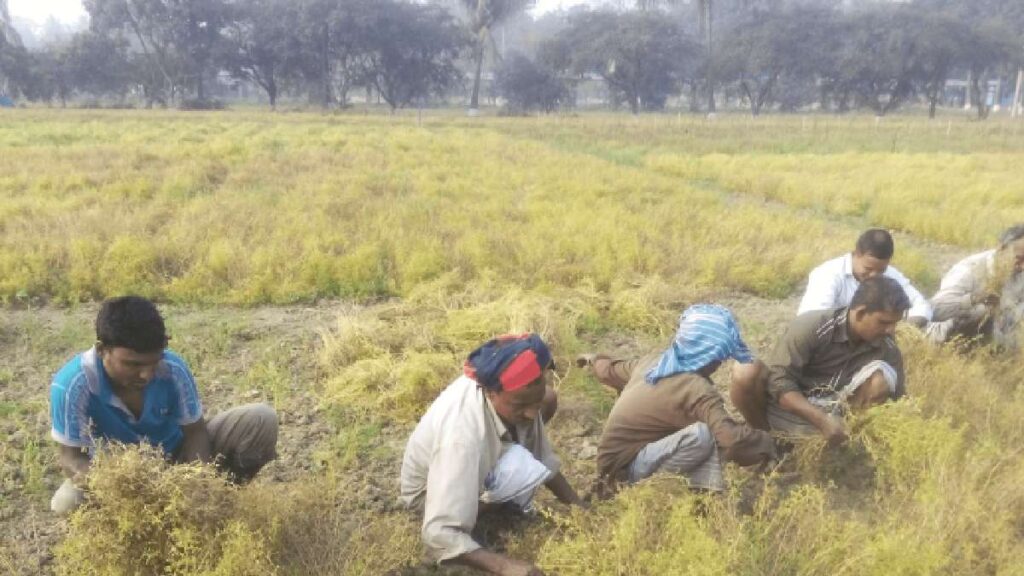Around 54,101 tonnes of lentils are expected to be produced from 35,380 hectares of land in the division during the current Rabi season, officials said.
The Department of Agricultural Extension (DAE) has set a production target of 32,411 tonnes of lentils from 20,620 hectares of land in four districts of its Rajshahi Agricultural Zone and 21,690 tonnes from 14,755 hectares of land in four other districts of the Bogura Zone.
DAE’s Additional Director Shamsul Wadud stated that all possible measures were taken to achieve the production target, providing farmers with newly developed high-yielding varieties of lentils. Small and marginalized farmers received seed and fertilizer support for lentil cultivation free of cost under the government’s agriculture incentive program.
Abul Kalam Azad, a farmer in Godagari Upazila, mentioned that he cultivates lentils to avoid irrigation water-related hassles for paddy. He cultivated lentils on six bighas of land this year without incurring extra irrigation costs. Farmers in the region find lentil cultivation appealing due to lower irrigation expenses and have witnessed abundant production in recent years.
Zakir Hossain, another farmer, highlighted that growers are increasingly interested in lentil cultivation due to its lower irrigation cost and consistently high yields in recent years. Sub-Assistant Agriculture Officer Atanu Sarker noted that farmers have achieved better yields in cash crops due to the promotion of high-yielding varieties and modern management practices.
Efforts from government and non-government entities are encouraging farmers to cultivate water-saving crops like lentils in the Barind area to alleviate the growing pressure on underground water resources. Over 1,500 volunteers are engaged in promoting water resource management for less water-consuming crops as part of the Integrated Water Resource Management (IWRM) Project.
Farmers’ interest in lentil cultivation has grown as they have experienced lucrative market prices for the crop in recent years. IWRM Project Coordinator Jahangir Alam Khan explained that farmers in high Barind areas, facing high irrigation costs for paddy farming, find lentil cultivation appealing due to its lower irrigation requirements.
Dr. Jagadish Chandra Barman, Principal Scientific Officer at the Bangladesh Agriculture Research Institute, emphasized the potential for significant lentil output in the Barind region. Cultivating lentils on around 80,000 hectares of fallow land after the harvest of transplanted Aman paddy could substantially contribute to reducing the country’s reliance on lentil imports.
The article concludes by highlighting the bright prospects of increasing lentil acreage, producing larger quantities with lower production costs, and reducing the pressure on lentil imports to meet domestic demand.

